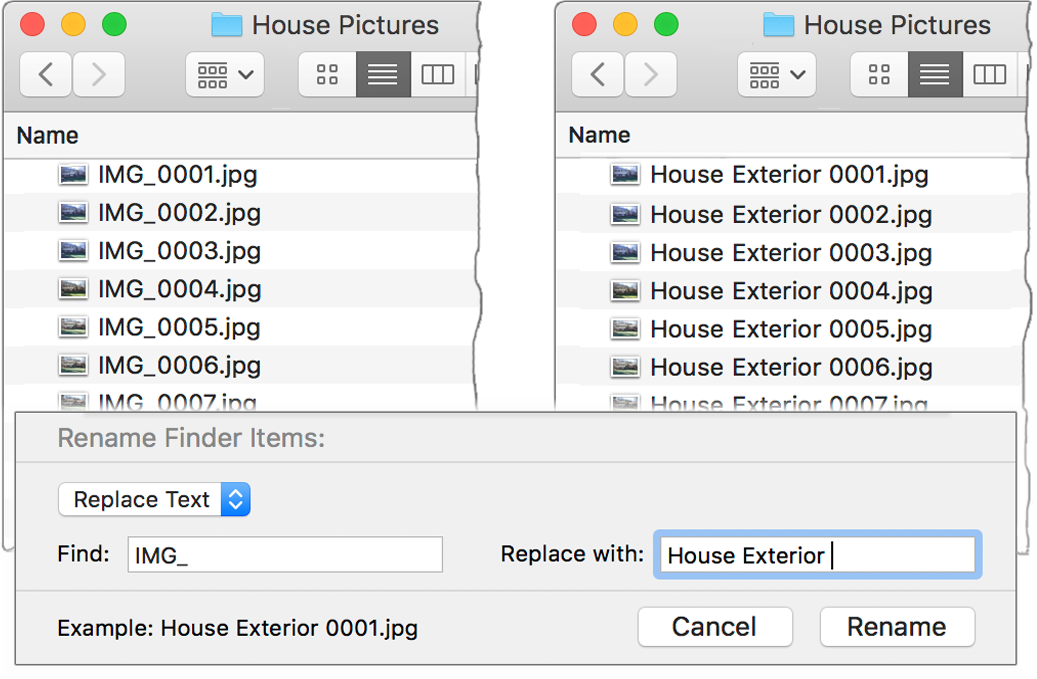

- #More room for file name mac high sierra how to#
- #More room for file name mac high sierra full#
- #More room for file name mac high sierra free#
Delete the primary Finder preferences file.

You can either do a quick Spotlight search or find the app under Applications > Utilities and open it.Ģ. You’ll have to operate via Terminal command to delete the preference file to fix it.ġ. This scenario is best for when the Finder app on your Mac is not responding or becomes inaccessible. Situation #2: Finder is Not Responding at All plist file because, after reboot, your Mac will regenerate the Finder preference file itself. Step 3: Now close the folder and restart your Mac. Step 2: In the new window, locate this file “”, right-click and select “Move to Trash.” Step 1: Search “~/Library/Preferences/” in the Spotlight bar, and click the “TOP HIT” result to open the Preferences folder. To fix that, the best way is to delete Finder Preferences. In some cases, the preferences files associated with the Finder app could corrupt or break - causing Mac Finder to misbehave.
#More room for file name mac high sierra how to#
Learn how to do that with the step-by-step instructions MacObserver introduced. If you don’t want to wait, you can either turn off Spotlight or exclude some items from indexing. How to know if Spotlight is indexing files? Just click the search icon on the top right corner, type any file name, and see if there is an “indexing…” status message showing up. During the Spotlight indexing process, your Mac is likely to run slowly, heat up, and the Finder app will lag as well. However, the process usually takes quite a while to complete. In this case, the Spotlight often needs to index all new files for you to search. Other times when you just finished transferring a large number of files from an external drive to your Mac. This usually happens when your Mac has updated to a newer macOS (e.g. Plus, the Finder slow issue can disappear too.
#More room for file name mac high sierra free#
You can also use this app to find duplicate files if you are used to storing multiple copies of backups and photos on your Mac.Ĭlean your Mac as much as you can to reclaim more free disk space, as this helps improve the overall performance of your Mac. We also recommend using CCleaner to locate those large old files and delete those you don’t need. How to fix it: if your Mac doesn’t have enough storage, the easiest way to free up more disk space is by using CleanMyMac - an app that helps quickly detect and remove system junk and unnecessary files. Here you get a quick overview of the storage via the colorful bar. To check storage usage, click on the Apple logo on the top left of your screen, and select About This Mac, then click the Storage tab. Otherwise, your Mac may suffer performance issues. In general, it’s a good practice to make sure your Mac disk has at least 20% free space available to use. Here are the common causes and solutions. This scenario applies to those of you who can use Finder to open folders or access files, but the process becomes much slower than usual. Situation #1: Finder is Slow But Still Usable
#More room for file name mac high sierra full#
Please do a full backup to an external drive before trying this.

Note that this method only applies to APFS-formatted drives which use volumes rather than true partitions (and I suspect the problem is caused by some bug in APFS).ĭisclaimer: while this seemed to work for me without issues, it’s messing with fundamental parts of the system in a non-reversible way, and should be a last resort (also might not recommend for less technical users). What worked for me was repeatedly adding and deleting a volume reserving nearly all the “available” space, which appeared to trigger updates to the APFS free space calculations.

Several other solutions also didn’t work. I don’t use Time Machine, and the handful of local snapshots I somehow had weren’t very large. After deleting many GB of files, almost no space would be freed. This happened to me on Mojave, specifically with an APFS-formatted 512GB SSD with an extra volume besides the main one.


 0 kommentar(er)
0 kommentar(er)
